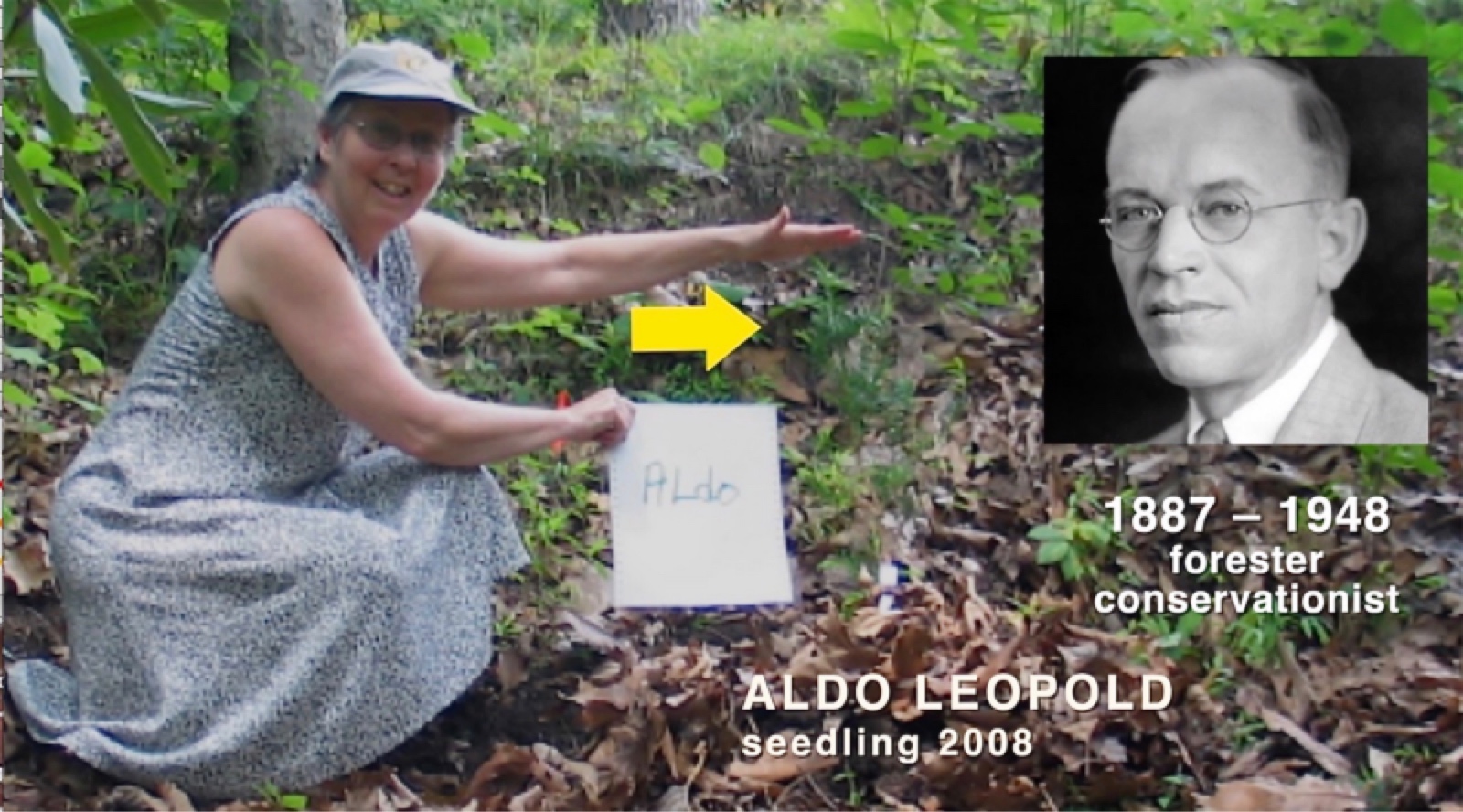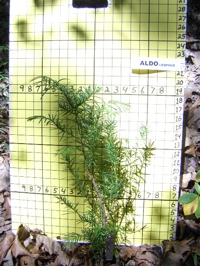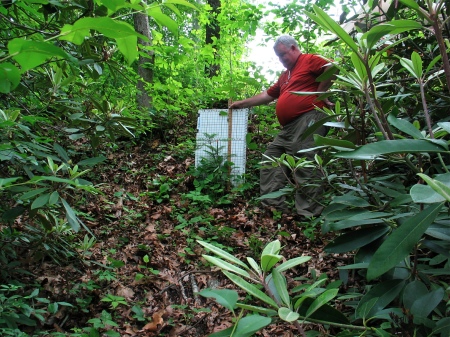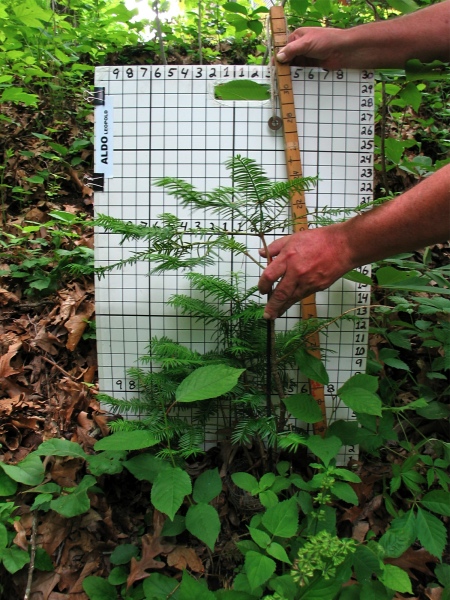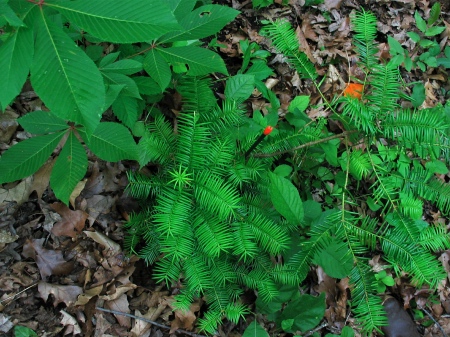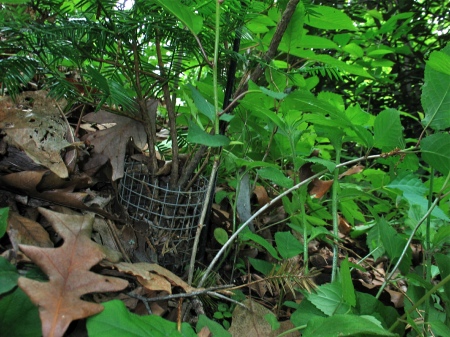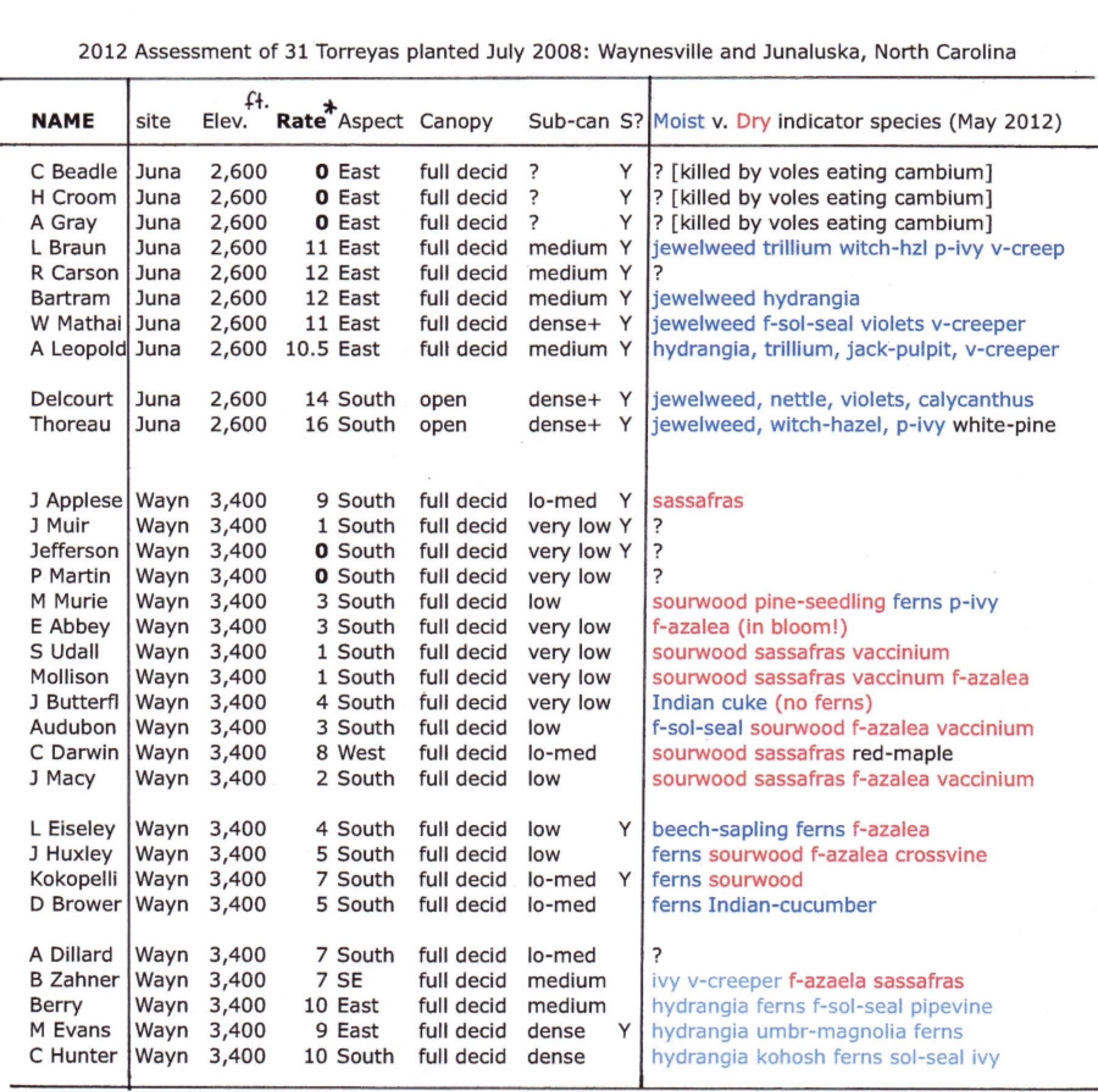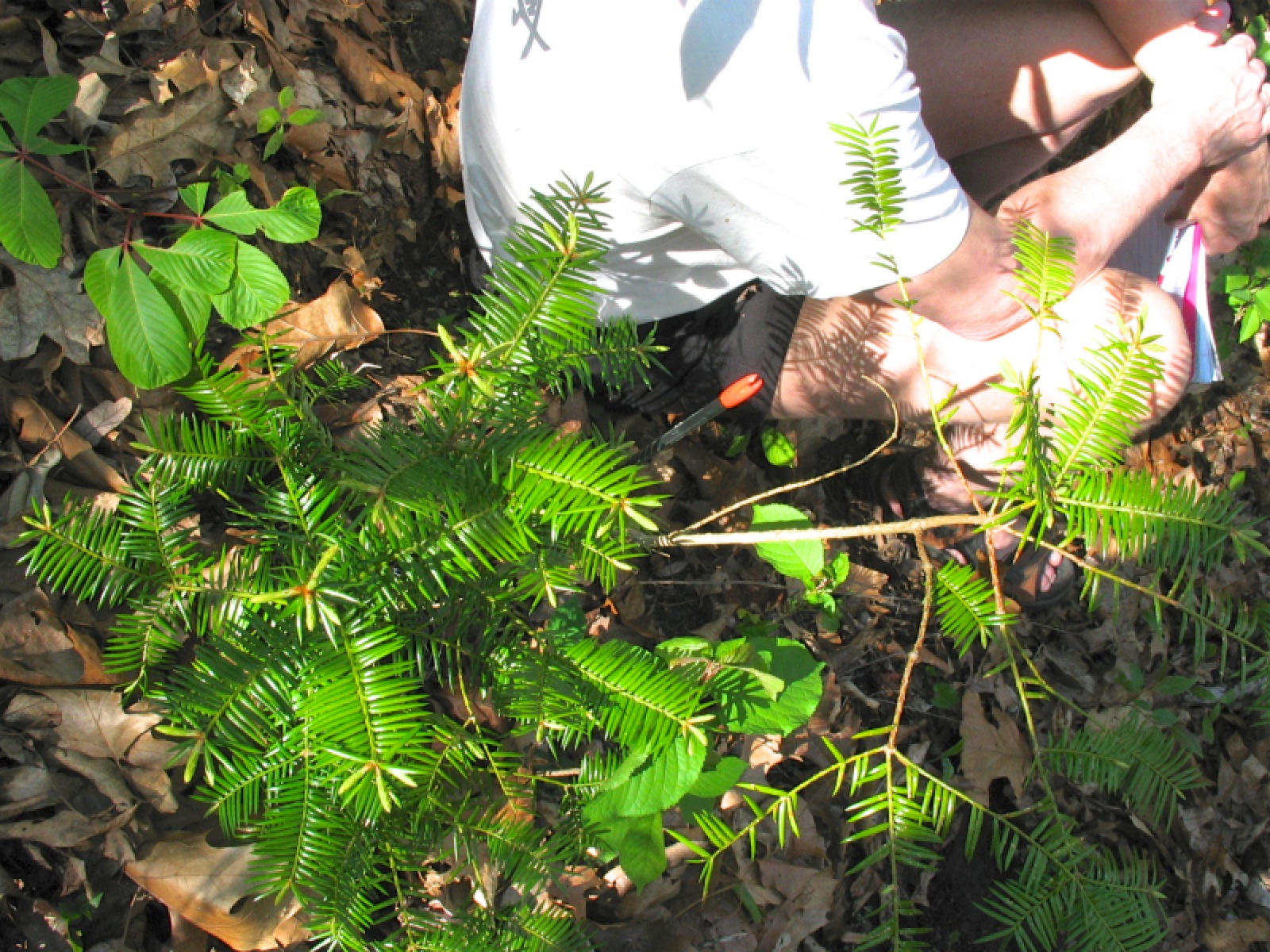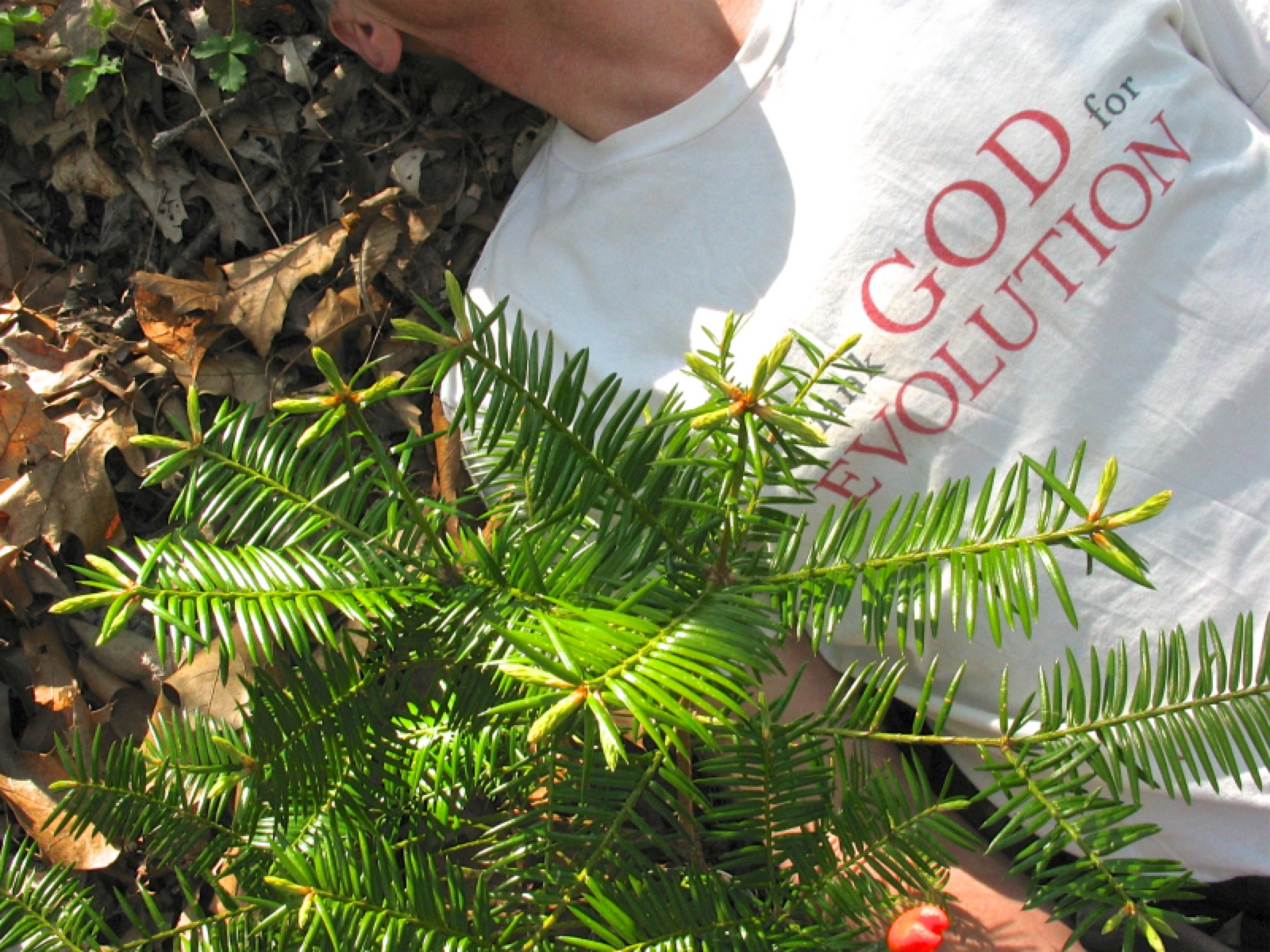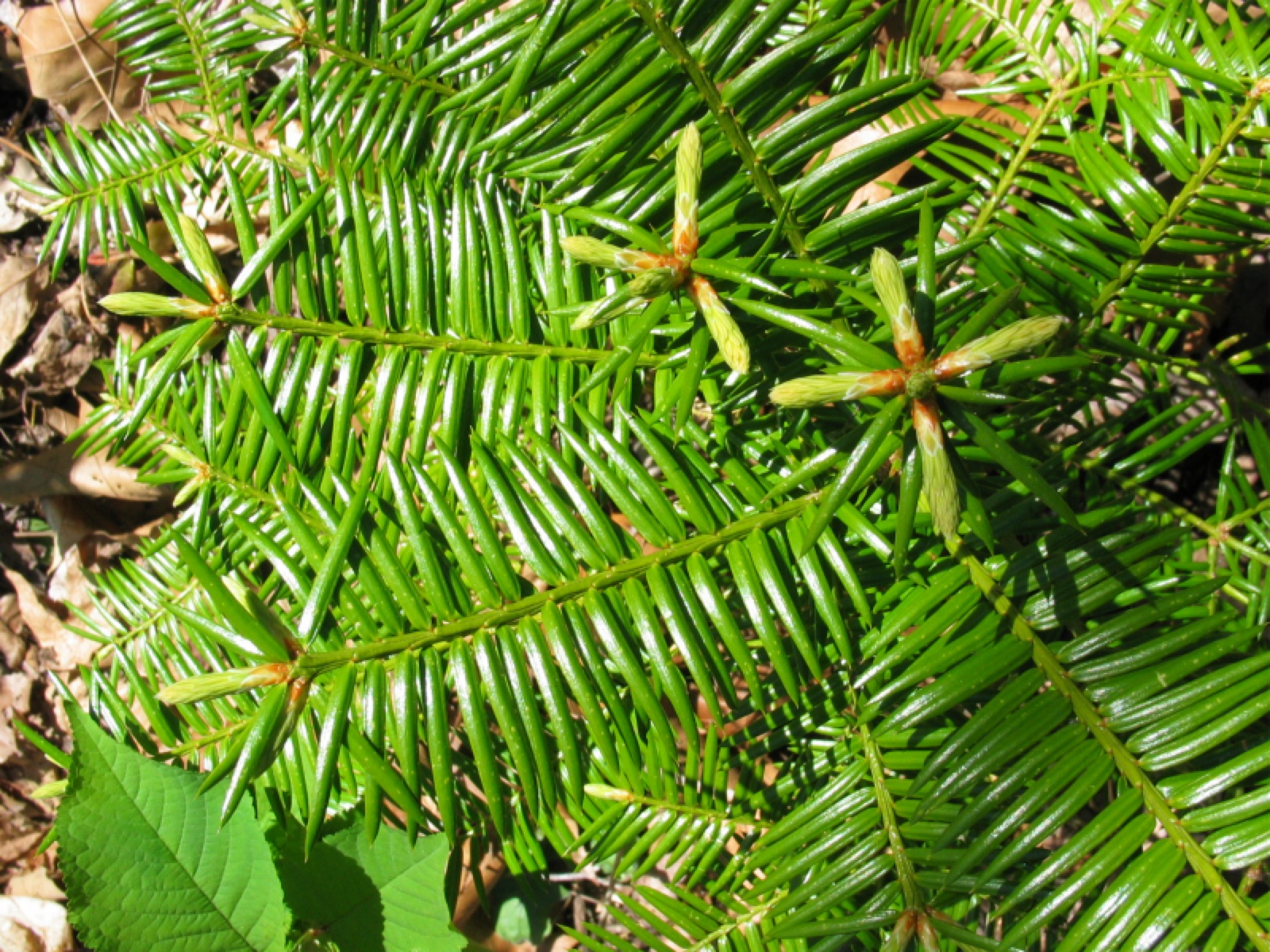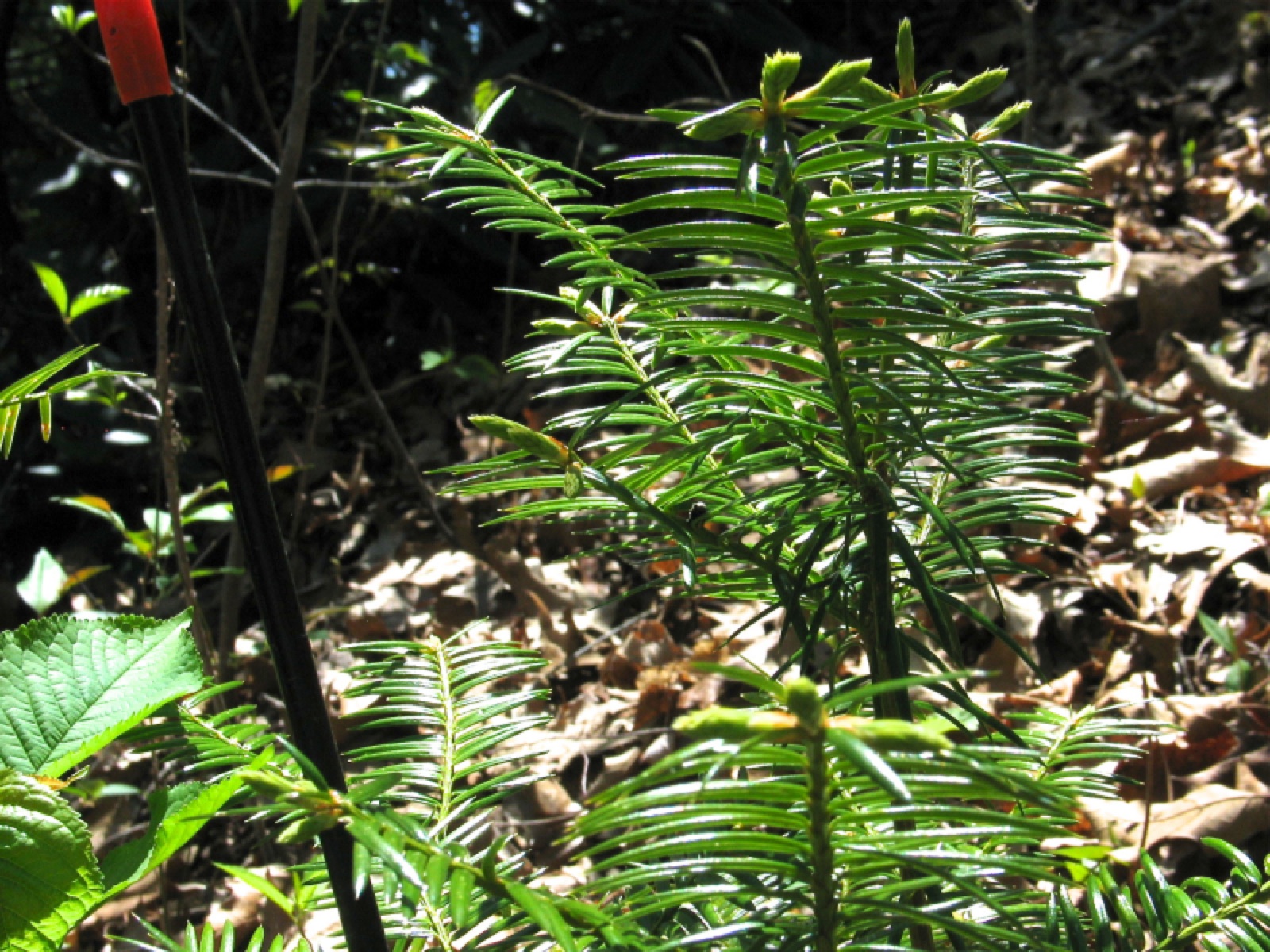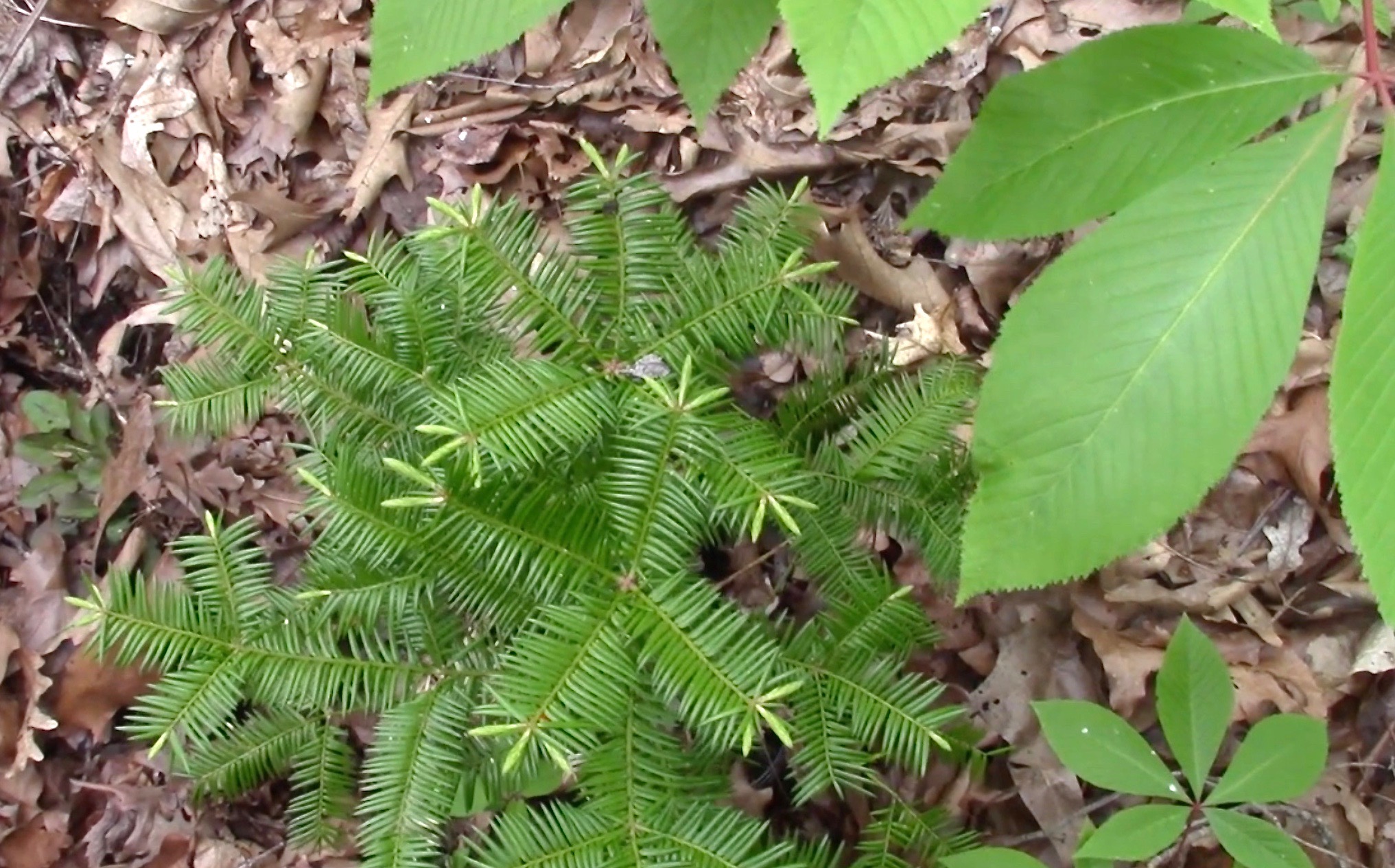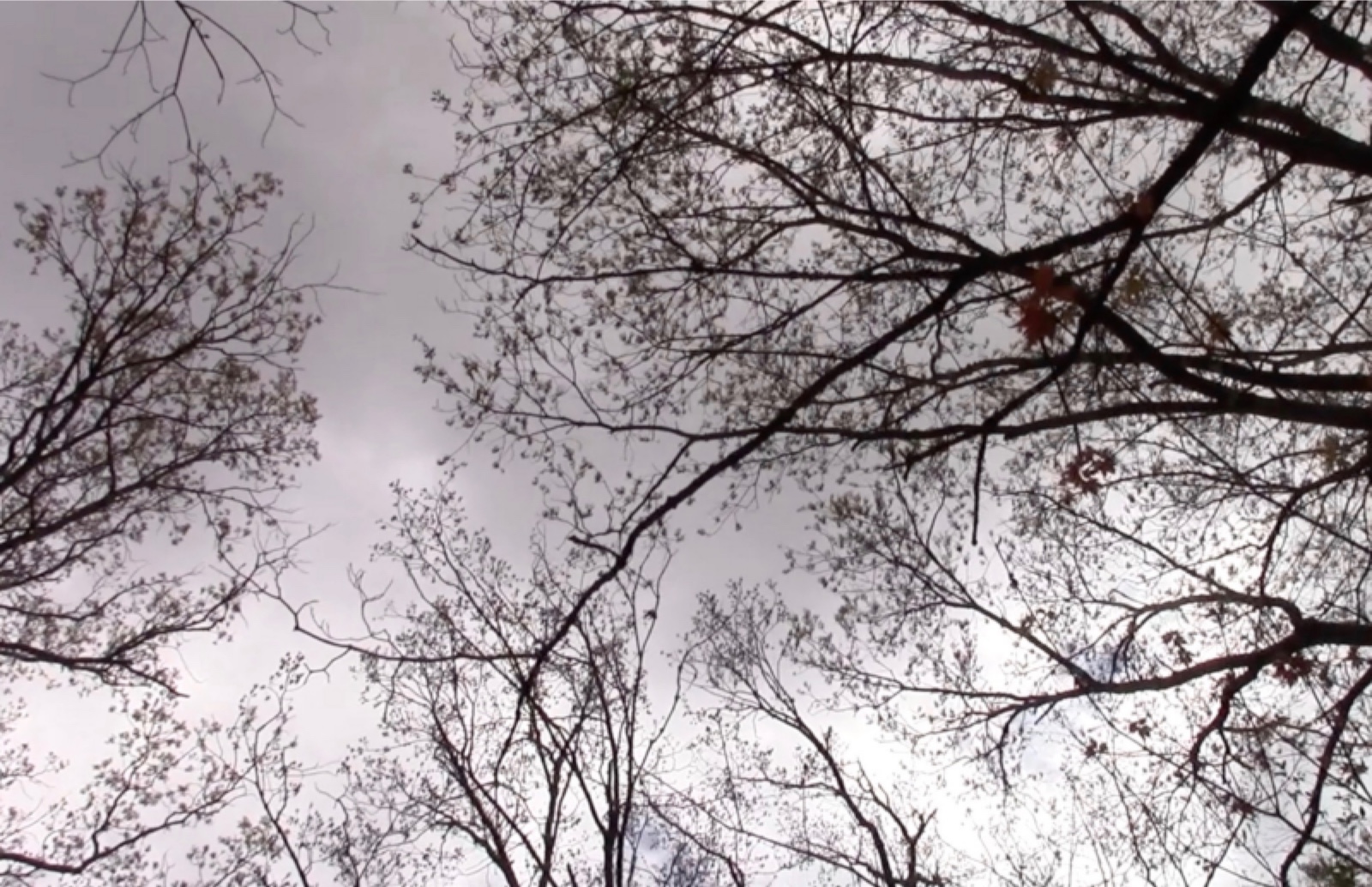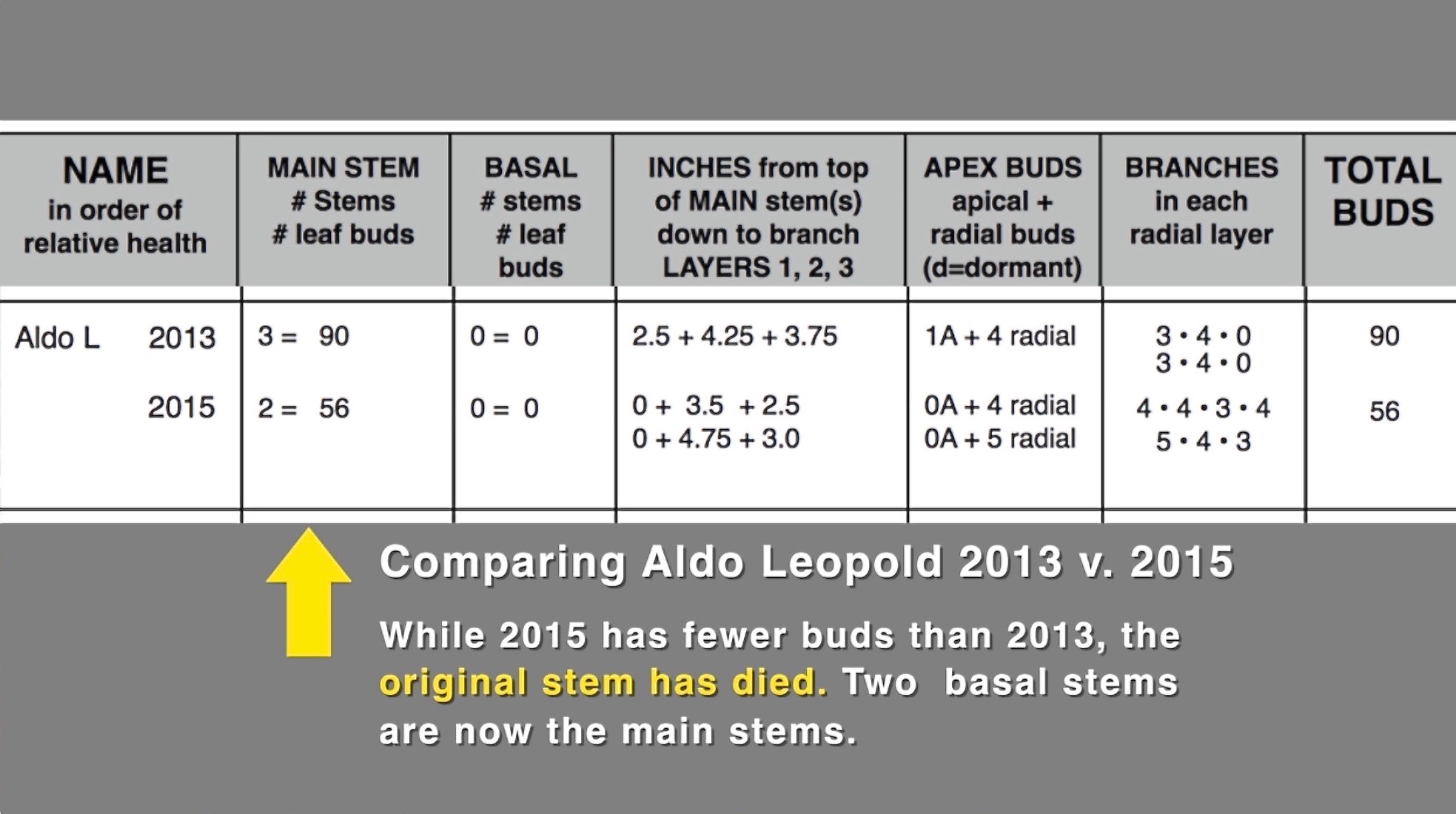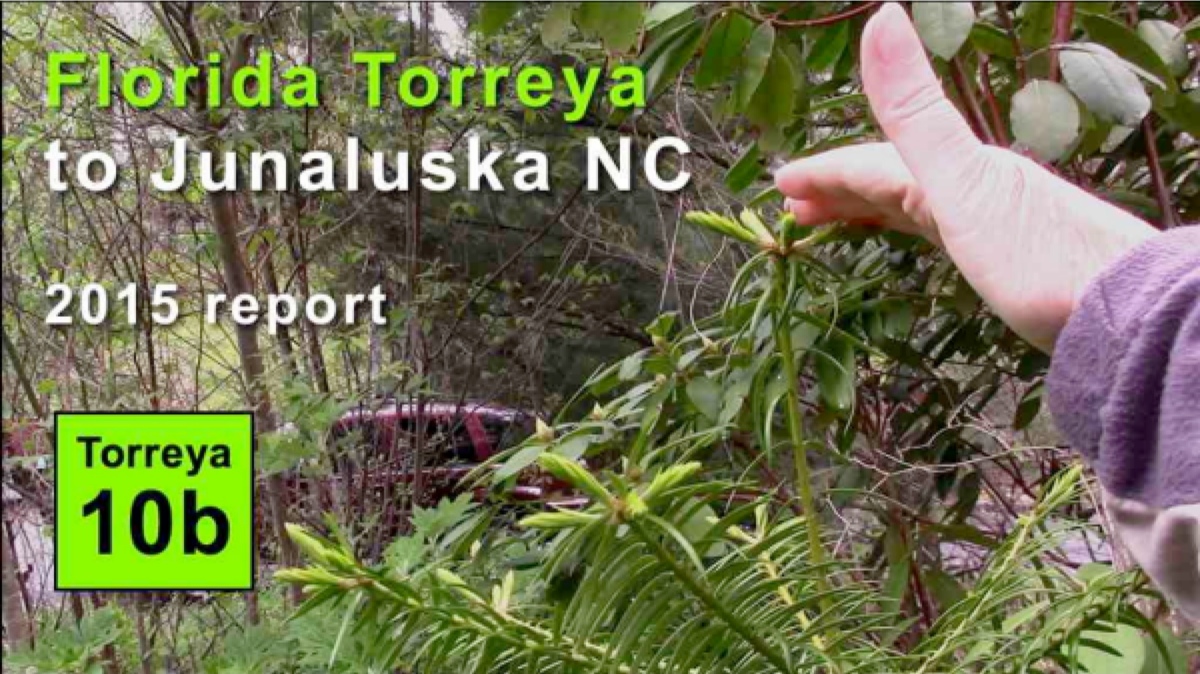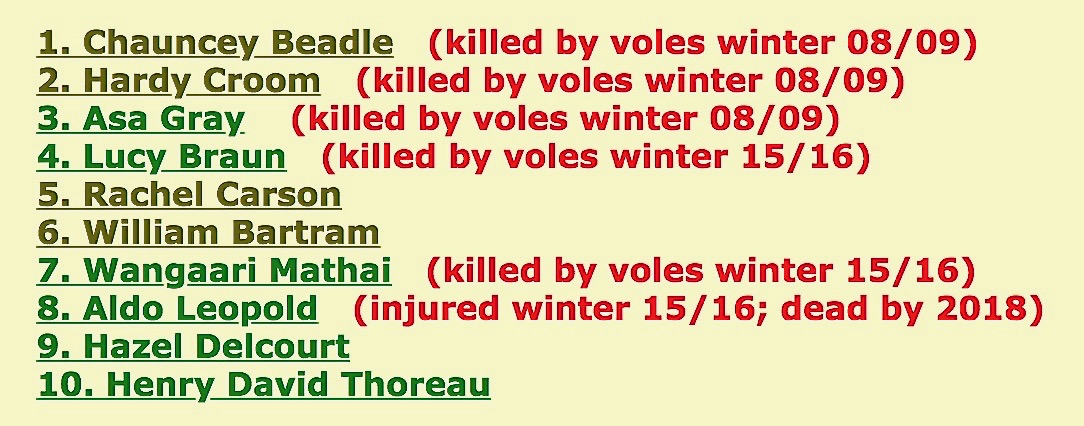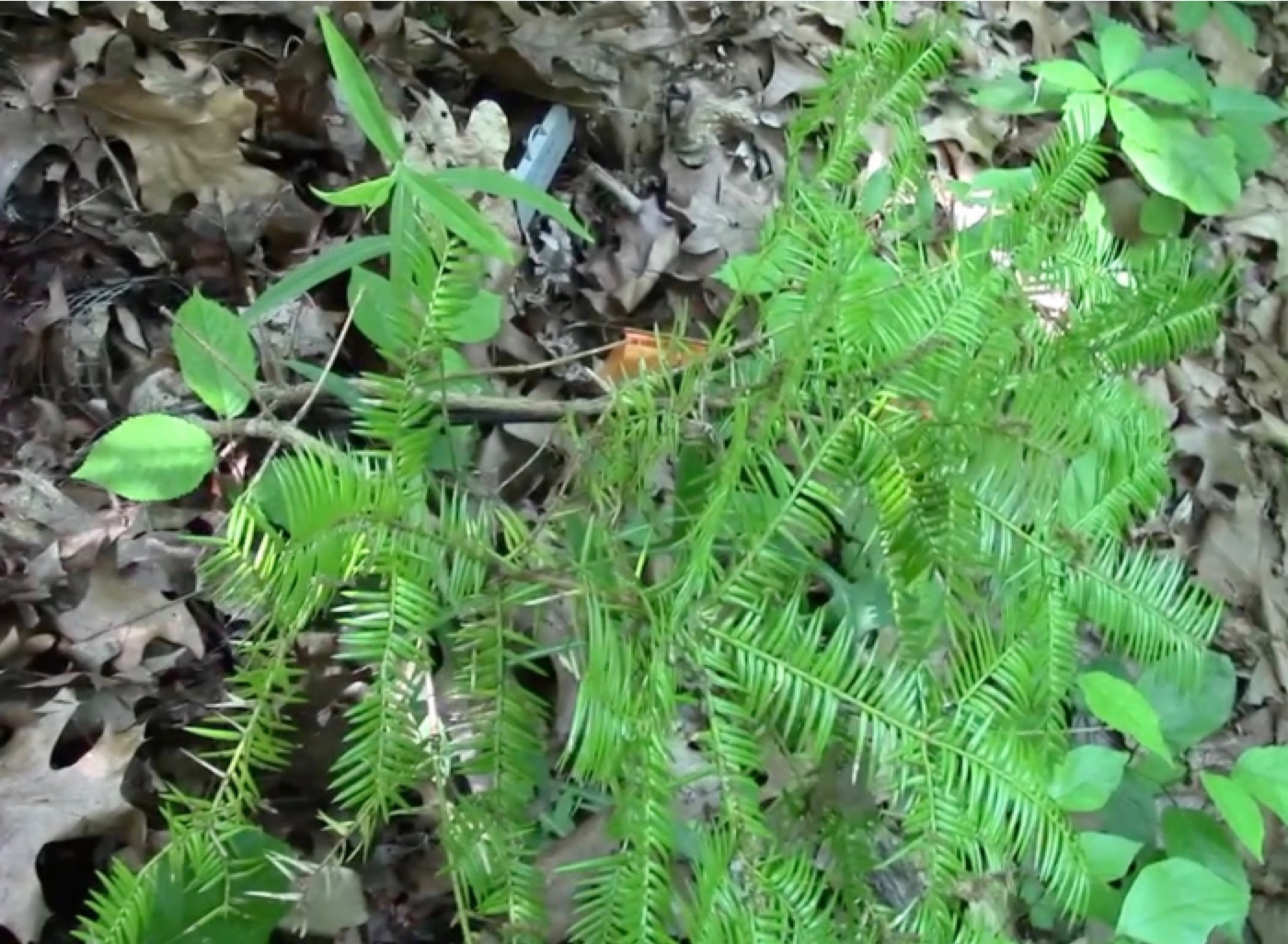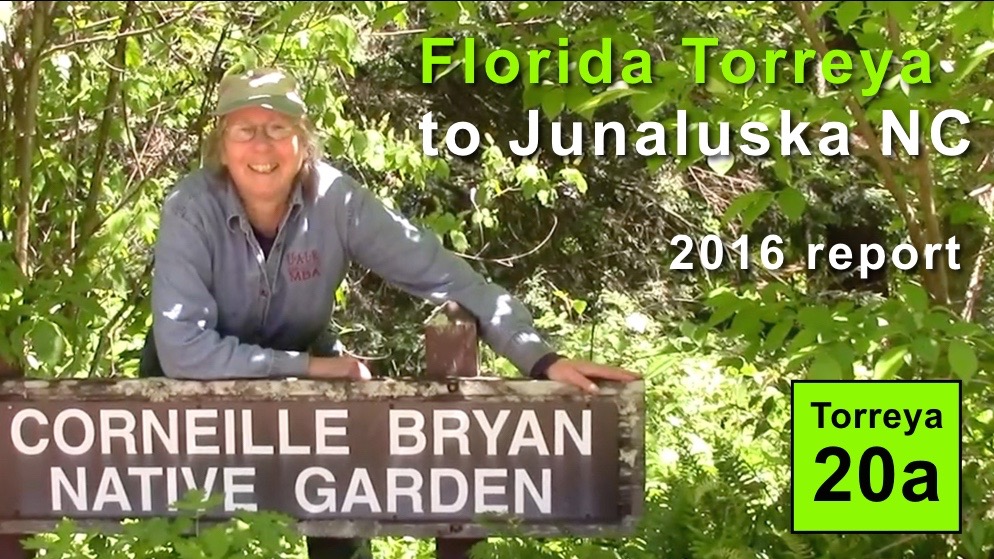Lake Junaluska, North Carolina (planted July 2008)
injured by voles Winter 2015/16 (dead by 2018)
Location is NE-facing slope of a NW-to-SE ravine with perennial creek at the bottom, in Corneille Bryan Native Garden, Lake Junaluska NC (2,600 feet elevation). The uppermost canopy above this specimen may be entirely white and red oak, thus affording sun for growth mostly in early spring and late fall.
FOUR YEARS LATER
ABOVE LEFT (May 18, 2012): Lots of rhododendron immediately to the left and right of this specimen. Associated herbaceous plants include trillium, jack-in-pulpit, hydrangia, virginia creeper, and others unidentified. Caged against voles at base.
ABOVE RIGHT (May 18, 2012): On a scale in which "Celia" specimen is rated by Lee Barnes as a 10, Aldo is rated a 10.5.
ABOVE LEFT (May 18, 2012): Vigorous light-green new growth both apical and lateral. Young buckeye seedling visible in photo.
ABOVE RIGHT (May 18, 2012): After 3 of the 10 original specimens planted were killed by vole predation of lower bark and root cambium during the first winter, all 7 remaining specimens were caged and thus fully protected.
ABOVE CHART: In 2012, Lee Barnes accompanied Connie Barlow on an assessment of all of the 2008 plantings on both the Junaluska and Waynesville sites. Connie asked Lee to use his judgment in rating each of the trees. Because they visited the Waynesville site first, two trees tied there for the highest rating on a scale of 0 to 10 (Thomas Berry and Celia Hunter). When they visited Junaluska, however, the torreyas were so much more vibrant that the scale began at 10.5 and went up to 16 for Henry David Thoreau. ALDO LEOPOLD was rated 10.5.
SPRING 2013 photos below taken April 23, but spring was delayed nearly 2 weeks, so it is more like April 10. Thus, instead of light-green new growth photographed above in spring 2012, there is only light-green leaf buds to indicate the vigor of the plant. Because the canopy trees have not yet leafed out, this is an ideal time for evergreen Torreya to photosynthesize.
ABOVE LEFT (April 23, 2013): Michael Dowd with the Aldo specimen, which exhibits two distinct stems of vertical growth.
RIGHT (April 23, 2013): The bushiest stem. Overall: a very healthy plant.
ABOVE LEFT (April 23, 2013): Top-down view of the doublet main stems, showing both apical and radial leaf buds at the top of the vertical stem of growth from previous year. Notice at left the leaf buds at horizontal tips of top layer of lateral growth from previous year. Young hydrangea growing in lower left of photo.
ABOVE RIGHT (April 23, 2013): Side view of the top region of main growth stems. (Same hydrangea leaf at lower left.) Overall: a very healthy plant.
NEW MEASURE OF HEALTH IN 2013: leaf bud count = 90 (total) on the 3 main stems (the 2 shortest of which began as basals).
APRIL 25, 2015
ABOVE: Lucy Braun has very healthy top growth. In above right photo, the main stem apex is obvious, but you have to look carefully to see the radial buds of the apical growth of the 2 short basal stems (one is left of the main stem and the other id directly below it).
The ALDO LEOPOLD tree is found at timecode 15:23 through 18:35.
MAY 21, 2016
While filming here in 2016 Connie Barlow discovered that tunneling, root-eating rodents had killed over winter two previously very healthy torreyas: LUCY BRAUN and WANGARI MAATHAI. Although ALDO LEOPOLD still had green leaves, the tree had tipped completely sideways, and Connie Barlow discovered a rodent tunnel at the base. Moreover, unlike the remaining healthy trees, Aldo had no vegetative buds or new growth: a sure sign of ultimate demise (which happened sometime before Connie's next site visit in 2018). See list, below.
WHY SO MUCH TROUBLE WITH RODENTS? All 6 of the rodent-killed trees were closest to the SW corner home that had a hanging birdfeeder in 2016, which Connie hypothesized as the cause of a boom-and-bust rodent cycle in this seasonally occupied neighborhood.
Of the 5 remaining Torreyas planted in 2008 at the lower end of the garden, 2 were killed overwinter 2015/16 by rodents eating the tree roots (Lucy Braun and Wangari Maathai) and another is gravely injured in the same way (Aldo Leopold). The death of LUCY and WANGARI are timecode 01:24 through 07:00. The troubles of ALDO LEOPOLD begin at 20:59 and continue through discovery of the possible culprit: BIRDFEEDER, from 20:51 through 28:28.
MAIN PAGE OF TORREYA REWILDING PHOTOESSAY |
